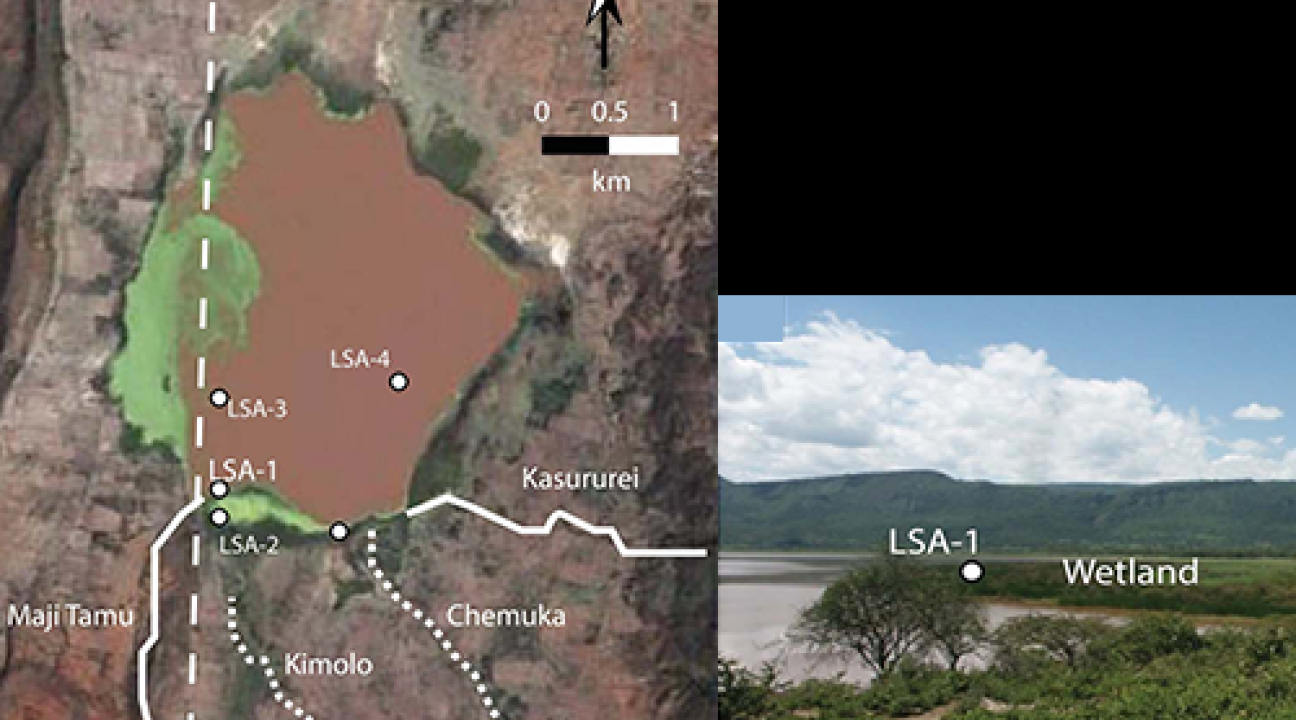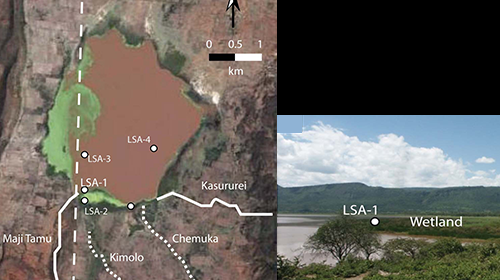Goman: Using sediment cores to recreate climate histories in Africa
Goman, M.F., Ashley, G.M., Owen, R.B., Driese, S.G., Muasya, A.M. and Hover, V.C., 2020. A high-resolution climate history of geochemical and biological proxies from a tropical freshwater wetland located in the Kenyan Rift Valley. Journal of African Earth Sciences, 162, p.103703.
The sedimentary and biological material preserved in wetlands in semi-arid regions provide a rich repository of paleoclimate and paleoecological archives. These records reflect an underutilized, but typically ignored paleoenvironmental resource in semi-arid settings. The results presented here demonstrate that groundwater-fed wetlands constitute a valuable record of environmental change that not only complement reconstructions from lacustrine settings, but also contribute unique data and insights into climate and landscape change.
We use data obtained from sediment cores collected from Loboi wetland, a groundwater-fed wetland located in the Equatorial East African Rift Valley of Kenya, to demonstrate the value of paleoenvironmental datasets extracted from wetland archives. This article relates surficial sedimentary geochemical data (TOC, δ13C, δ15N, C:N, and %C3) at Loboi to the extant macrophytic vegetation. The surficial data are used as an analog to interpret the geochemical signature of three sediment cores and a soil pit. The stratigraphic records show significant variation along a north to south transect through the wetland. The geochemistry indicates that papyrus wetland records are distinctly different from Typha dominated wetland sedimentary signatures. The interpretation of the stratigraphic material is further improved by the inclusion of sub-fossil macrophyte and testate amoebae remains. The extraction and identification of seeds of wetland plants from the sedimentary archive provide invaluable genus to species specific details of wetland ecology. Further, the inclusion of testate amoebae as an indicator of surface hydrological conditions has significantly improved interpretation of the hydrological history of Loboi wetland.
The stratigraphic record from Loboi indicates that between ~1100 and 1470 C.E. (Medieval Climatic Anomaly) dry conditions dominated the Loboi region, except for a brief period of wetter conditions between ~1275 and 1345 C.E. Seasonally wetter conditions began to persist between ~1470 and 1630 C.E. Wetland sediments developed after this time as reflected by the sequestration of carbon in the sedimentary record. Recent historic biological and sedimentary proxies reflect increased agrarian impacts on the landscape surrounding Loboi. Read more here



